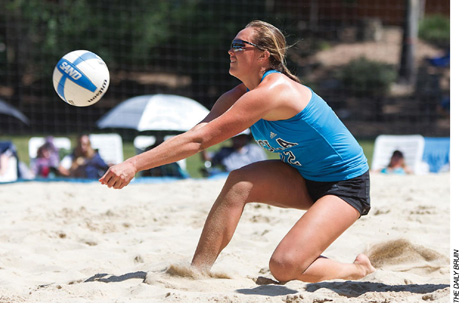| Hitting the Target: Messaging and Branding |
| By: David Portney
Originally Published in: Coaching Volleyball Provided by: AVCA THE LAST YEAR has been a doozy for us in the world of marketing and technology. We launched a brand new website (www.avca.org), and have developed methods to make our emails not only look a heck of a lot better, but be more effective in communicating our message. The common thread between those two items is using targeted messaging. We understand that although there are some commonalities, club is different from college, and indoor is different from beach, and so on. The reason I mention this is to make you think about your own target audience demographic for your volleyball team. Who's attending your volleyball matches? Who's visiting your website? Who are your donors? Many of you might be able to rattle off those three answers rather easily, but then ask yourself another question: What are you doing to specifically target those groups? For the high school and college coaches, it's probably fair to say a large percentage of your attendees are students of your institution. Perhaps some are local members of the community and others are family of the players. These are three very different groups that need to be talked to differently. Obviously, the family of players will continue to be the most reliable fans to show up to the most matches. The other two demographics will depend on varying factors, but you shouldn't rely solely on the success of your team to draw folks into the gym. As the coaching staff and leaders of the team, you are the face(s) of the program and need to be the one(s) reaching out to potential fans to come join. How exactly you go about doing that won't be the same for any two programs, but it's important to have targeted messaging. Regardless how you end up communicating, your website/online media is one of the biggest tools you can use. If you're able to look into your website's analytics to see more information about your visitors ... great! If not, no sweat. Take inventory of your website and who you think it speaks to most. Are your website and social media accounts just an homage to the biggest victory, or is it engaging to the demographic you're trying to reach?
I see all of you doing these things, but only a handful capture and share the moments. Start gathering content for your sites and marketing materials now, and break it up by who you think would find the material most relevant. In 2016, it's all about target marketing and the instant culture (ahem "insti"gram). So take a step back, look at everything you've done to market your program, and think of ways to segment your demographic so they feel the messages they get are meant just for them. Many studies show a broadcast email is ignored far more often than an email the recipient knows was intended solely for them. I promise if you're successful, you will see increased loyalty to your volleyball team. |




 Whatever the case, what's happening in the present is the most important thing to promote. If the coolest thing that happened to your program was eight months ago, just the fact it's eight months old could turn people off Sorry, that's just the reality of today's culture. Don't miss the opportunity to market what your teams are up to now by posting it everywhere you can. Use your smart phone to capture the weight training, spring matches, community service, recruiting trips or anything else happening. Use all of this content (it doesn't even need to be great), and break it up by who you think would find it most relevant. For example, food packing at the local pantry resonates with the local community and making appearances at campus events brings awareness to fellow students.
Whatever the case, what's happening in the present is the most important thing to promote. If the coolest thing that happened to your program was eight months ago, just the fact it's eight months old could turn people off Sorry, that's just the reality of today's culture. Don't miss the opportunity to market what your teams are up to now by posting it everywhere you can. Use your smart phone to capture the weight training, spring matches, community service, recruiting trips or anything else happening. Use all of this content (it doesn't even need to be great), and break it up by who you think would find it most relevant. For example, food packing at the local pantry resonates with the local community and making appearances at campus events brings awareness to fellow students.


